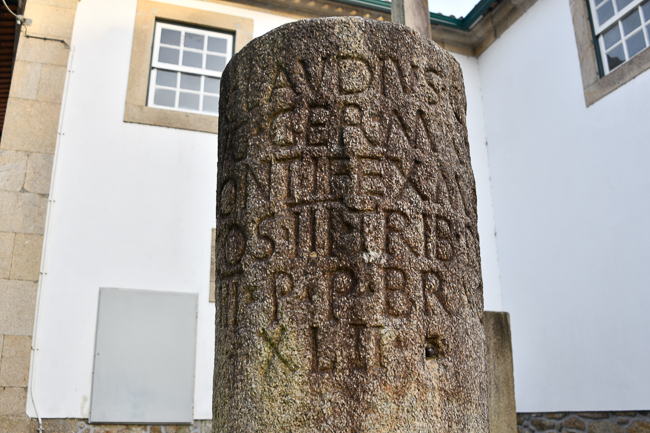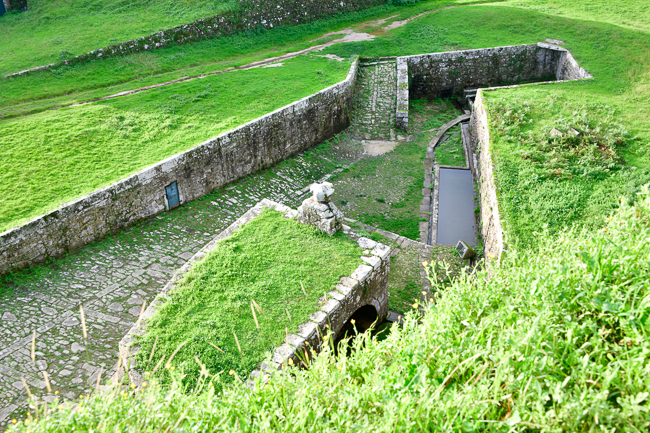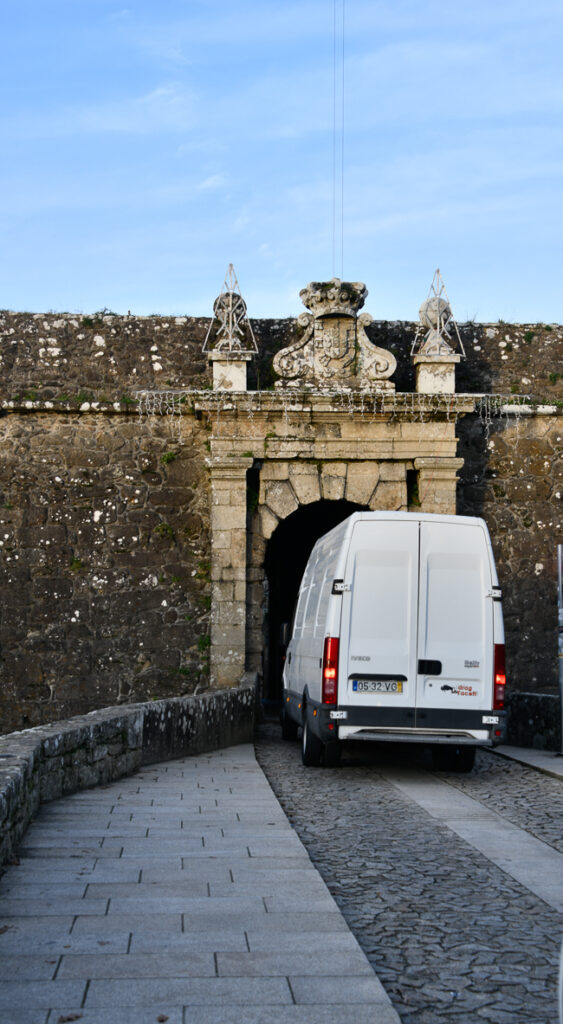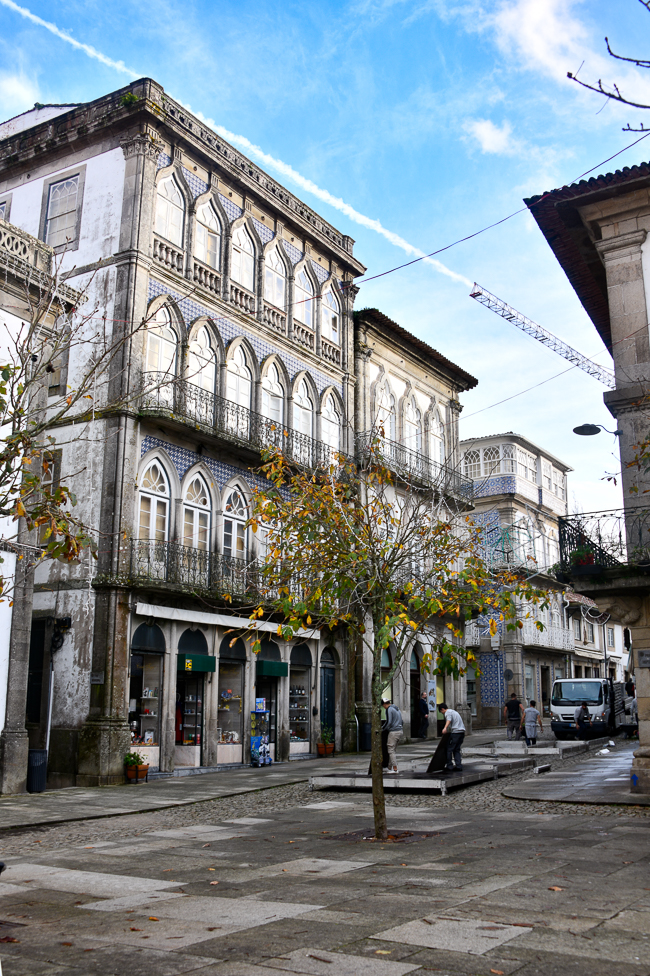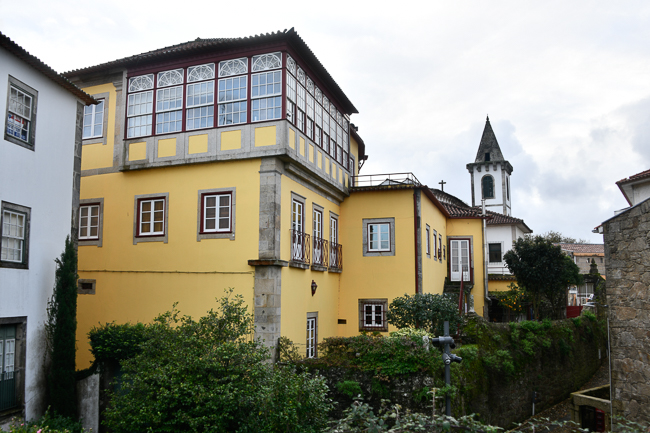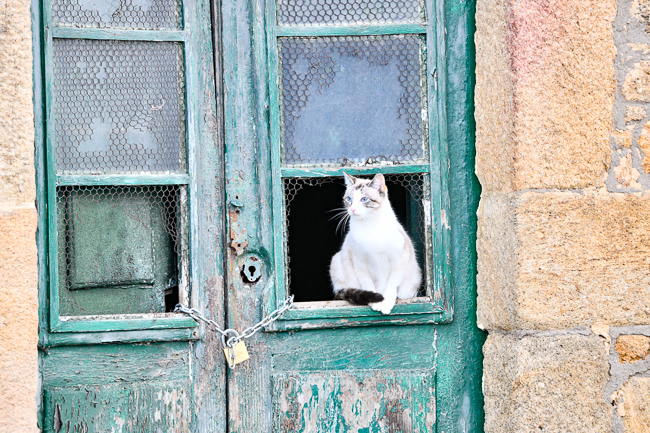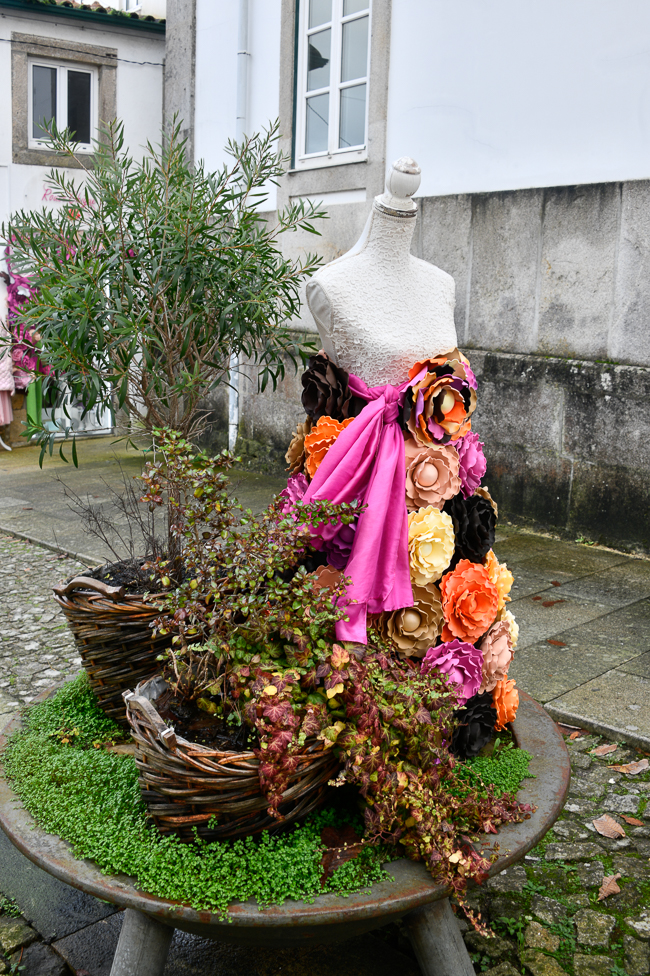November 2022
The Walled Portion of the City of Valença, Portugal
Valença dates from Roman times. Inside the fortified walls, a Roman milestone marks the XLII (42nd) mile of an ancient Roman road that connected the town of Braga to Tui.
i[berius] Claudius Caesar Aug[ustus] Germanicus Pontifex Max[imus]. Imp[erator] V Co[n]s[ul] III, Trib[unicia] Potest[ate] III. P[ater] P[atriae] Braca[ra] XLII.
Tiberius Claudius Caesar Augustus Germanicus Pontifex Maximus. Imperator V Consul III, Tribunicia Potestate III. Pater Patriae Bracara XLII. It was erected on the orders of Emperor Claudius in the first century AD.
This stronghold was populated by the order of King Sancho I during the 12th century. It was called Contrasta which means “village opposed to another”, Tui (Spain) in this case. King Afonso III changed its name to Valença in the 13th century.
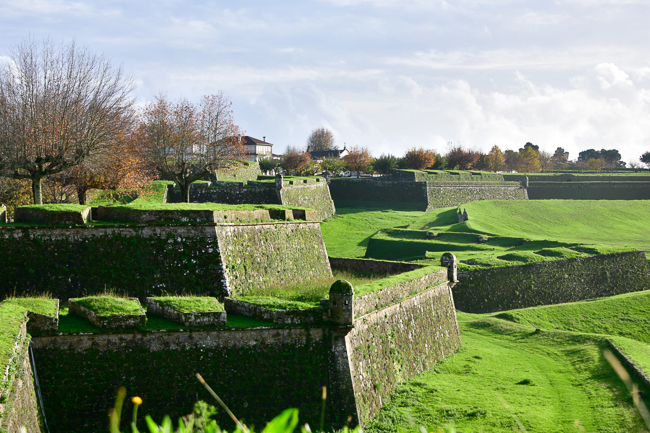
We are staying in a Pousada de Valença do Minho, inside the walled fortress. From here you can see the Minho River and Galicia, Spain
The walls have been destroyed several times by the Barbarians, the Moors, the armies of Asturias and Leon, and even the French in the 19th century. They have always been restored.
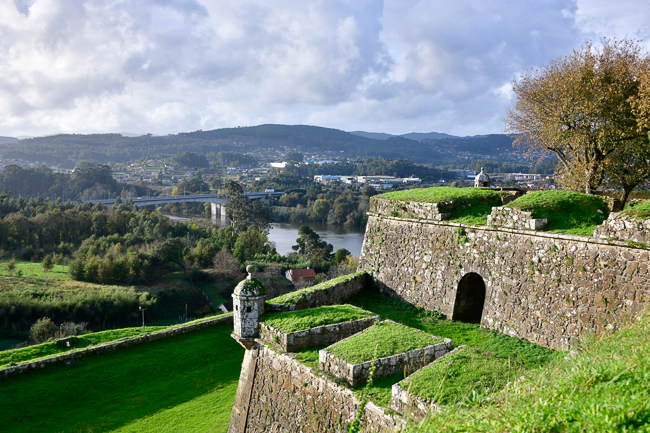 The first walls were built in the 13th century. It was upgraded during the 17th and 18th centuries forming the present bulwarked system.
The first walls were built in the 13th century. It was upgraded during the 17th and 18th centuries forming the present bulwarked system.  The main entrance is Porta do Sol (Sun’s door). This door was damaged during the Napoleonic invasions. There are 3 more to get to the end of town, each ridiculously narrow, and frightening to drive a full-sized car through.
The main entrance is Porta do Sol (Sun’s door). This door was damaged during the Napoleonic invasions. There are 3 more to get to the end of town, each ridiculously narrow, and frightening to drive a full-sized car through.
In 1879 Portugal and Spain agreed to construct a bi-functional (road and train) bridge. The bridge was inspired by Eiffel’s works. The bridge is still in use.
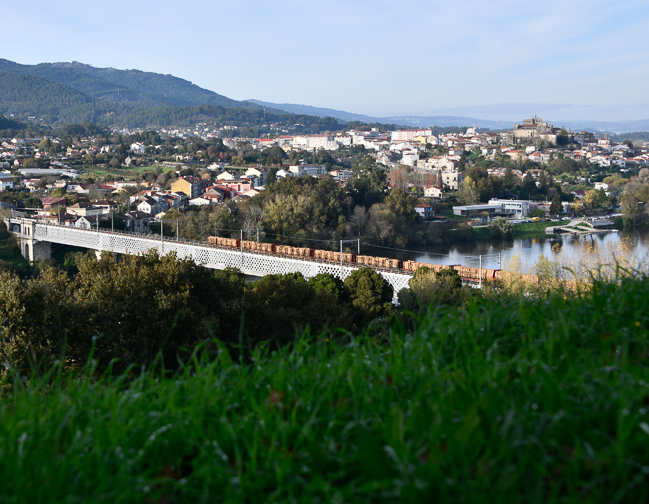
The trains use the top and the cars drive on the bottom. That is a train filled with lumber going across the bridge.
Walking Around Valença
*
*
*
